- Register
- Log in to Tune-In
- Wishlist (0)
-
Shopping cart
(0)
You have no items in your shopping cart.
About Beatles Radio.com
We are all about the Beatles.

The former Beatles member, 85, shared this information with USA TODAY in May 2023. Ringo named one of his longtime collaborators, Jim Keltner, for the honor. He and Jim first met in 1971 in London, where they were introduced by George Harrison, Ringo's former and late Beatles bandmate. In 1989, Ringo & His All-Starr Band launched and Jim was included as a member. The 83-year-old musician has participated as an occasional guest from 2006 to 2023 for the live rock supergroup created by producer David Fishof.
Article continues below
Ringo told the outlet, "Jim is my all-time hero drummer, no one is as good as him − I love Jim, and that’s about it."
Article continues below
READ MORE: Danity Kane's Aubrey O'Day talks band reunion and being 'made under Diddy'READ MORE: John Lennon's son has one major fear when it comes to The Beatles' legacy
He also took a moment to highlight Dave Grohl, former drummer of Nirvana and the founder of the rock band Foo Fighters, in the interview. Ringo said, "I've seen Dave Grohl play straight. He was doing backup at some party, and he was doing it straight. And I was like, OK, wow."
Jim, born James Lee Keltner, is known for his session work. details

Sting is thankful to The Beatles for opening the "floodgates for songwriters to have an attempt at writing songs".
The Every Breath You Take singer's touring guitarist Dominic Miller has released a songbook of 14 of the Fab Four's tracks for classical guitar titled The Beatles arranged by Dominic Miller: Guitar Solo Songbook.
Miller has revealed that he and Sting, 74, have often discussed the music and career of The Beatles, and the former Police frontman believes that the compositions of Sir Paul McCartney, John Lennon, George Harrison and Sir Ringo Starr paved the way for British musicians who followed, like himself.
In an interview with Rick Beato on his YouTube channel, Miller said: "As Sting has often said, actually – and we talk about this sometimes – is that the Beatles, by doing those songs and coming up with those compositions, they kind of gave a license for everyone else to have a go.
“These guys from Liverpool, if they can do it, everyone should try, and so it opened the floodgates for a lot of songwriters to have an attempt at writing songs, which had never really happened before in England, like pop songs – verse, chorus, verse, chorus, bridge.”
details

The beauty—and arguably the secret ingredient—of The Beatles was the band’s ability to bring four distinct personalities and abilities together to create something cohesive, catchy, and fun to watch. Fans swooned over Paul McCartney, John Lennon, George Harrison, and Ringo Starr as individual musicians. The Fab Four inherently implied all four musicians were notable and distinct. But as far as the behind-the-scenes operations were concerned, two people ran the show.
As founding members and the two musicians who had been playing together the longest, John Lennon and Paul McCartney were the natural choice for any two songwriters of the four. Starr, for his part, seemed content to be the band’s backbone and throw in a novelty song every now and then. But for the band’s youngest member, George Harrison, this was a wall he would throw himself against time and time again before The Beatles’ final split in 1970.
According to an interview in Anthology, McCartney and Lennon discussed Harrison’s role in the group privately. “It was an option, you know, to include George in the songwriting team,” he said. Optional, sure. Wanted? Maybe not. Paul McCartney and details

Sir Paul McCartney needs no introduction as a former member of the Beatles, one of the most revered bands in music history, and as a successful solo artist in his own right. After nearly seven decades in the music industry, McCartney is still admired for his vocals, songwriting, and proficiency on multiple musical instruments by fans worldwide. It would therefore seem unlikely that the nineteen-time Grammy Award winner and veteran artist would have any issues performing, but according to McCartney, there is one song he struggles to play live because of a particular tragedy and his deep emotional connection to it. Why Paul McCartney Can't Perform "Here Today" Without Getting Emotional.
Eventually, McCartney's grief inspired him to pen the song "Here Today," which was written in 1981 but released the following year. During the same interview, McCartney recalled what the writing session was like or "Here Today", "I found a room and just sat on the wooden floor in a corner with my guitar and just started to play the opening chords to 'Here Today.'" One particular song lyric, McCartney explained, was the most profound for him: "'The night we cried,' that was to do with a time when we were in Key West, down in Florida... details

The recent Beatles Anthology updated series means there are no more secret recordings. Producer Giles Martin says no more secret Beatles tracks will ever be released.
The producer has spent a number of years going through the Fab Four’s archives for the Disney Plus revived Beatles’ Anthology series and remixed albums and tracks but he doesn’t believe there is anything new left to uncover.
According to The Sun newspaper, he said: “I don’t think there’s anything. I always say that then something turns up. “But I don’t think there’s anything. It’s incredible how much interest there still is over Beatles stuff.
“You do hear new things on this Anthology box set. There’s that first round of Helter Skelter, which for me is great because it’s really raw. It’s proper in your face music. “And then people go, ‘Well, how come we haven’t released the 20-minute long version of Helter Skelter?’ I think we’re done.”
Giles’ father, Sir George Martin – who died in 2016 – was known as “the fifth Beatle” for his work with the band and Giles has enjoyed g details

The star of new movie Avatar: Fire and Ash mentioned the Fab Four more than once when she was given the Colbert Questionnaire on a recent episode of The Late Show With Stephen Colbert.
And, like everyone, she had a favorite. Hers was John Lennon — who, along with Paul McCartney, George Harrison, and Ringo Starr, formed the British rock band that famously invaded America — before he was shot and killed outside his New York City apartment building on Dec. 8, 1980, at just 40.
She confessed to Colbert, who asked whether she's ever asked for a celebrity's autograph, that she'd once written Lennon a special message.
"I wrote a several-page letter on lavender stationery with purple ink,' Weaver said. "'Dear John.' It was like five pages front and back. And I folded it up. I put an envelope, and I dropped it off at this restaurant that I heard he went to."
She couldn't recall what she's written, but she didn't seem to want to.
"I hope they threw it away," Weaver said.
In the same interview, the three-time Oscar nominated star was asked about the first concert that she attended, which was of course the Beatles.
Weaver, who's 76, thought she might have been 12 when she details

Ringo Starr is preparing to extend his late career love affair with country music, confirming that a new studio album is in development and pencilled in for release sometime in early 2026. The untitled project will again explore country and Americana territory and reunites the former Beatle with producer T Bone Burnett, the creative partnership that reshaped Starr’s recording direction with 2025’s Look Up.
Starr has completed his core recording work and is now navigating schedules around final production and label timelines. While no release date has been locked, February or March remains the most likely window, positioning the album as a direct continuation of the creative momentum that began last year.
The new record will once again see Starr working closely with Burnett, a producer whose résumé spans roots music, film soundtracks and heritage American songwriting. Burnett’s influence on Look Up was widely credited with giving Starr a grounded, authentic sound that aligned naturally with his long-standing affection for country music. That same sensibility is expected to guide the 2026 album.
Starr has also returned to songwriting with longtime collaborator Bruce Sugar, c details
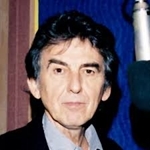
On this day (January 2) in 1971, George Harrison topped the Billboard 200 with All Things Must Pass. The triple-album marked his first release since The Beatles officially parted ways in April 1970. Musicians on the album include Eric Clapton, Ringo Starr, Alan White, Pete Drake, and many more.
Harrison began working on All Things Must Pass at EMI Studios the month after The Beatles officially broke up. Co-produced by Harrison and Phil Spector, sessions for the album stretched into October. Finally, after months of work, Harrison released the three-LP collection on November 27.
Upon its initial release, All Things Must Pass consisted of three LPs. The first two contained the album’s 18 official tracks, many of which were passed over for inclusion on previous Beatles albums. The third LP contained a collection of five live studio jams.
George Harrison Won the Race to the Top of the Singles Chart.
Paul McCartney was the first member of the Fab Four to score a No. 1 album after the band broke up. His album, McCartney, reached the top of the Billboard 200 on May 23, 1970, and stayed there for three weeks. Interestingly, Let It Be dethroned McCartney’s solo release.
Harrison, on the o details

Amidst the cold studios and rising tensions of January 1969, the Fab Four managed to set aside their differences to record one last chart-topping legacy.
On the morning of January 2, 1969, four men walked into the drafty, cavernous Twickenham Film Studios in London. To any onlooker, they were the biggest stars on the planet. To themselves, they were a band on the brink of collapse. This was the beginning of what was intended to be a "return to roots" project for The Beatles, originally titled “Get Back”. It would eventually become their final released album, “Let It Be”.
The atmosphere that first morning was far from the polished magic fans heard on their records. The studio was freezing, the lighting was harsh, and the group was being trailed by film cameras capturing every rehearsal, every argument, and every yawn. Paul McCartney, acting as the de facto director of the group, wanted to strip away the complex studio tricks of their previous albums. His goal was simple: The Beatles playing live, together in a room, with no overdubs.
But the reality was complicated. After years of being the most famous people on earth, the individual Beatles were drifting apart. John Lennon was inc details

Name a music industry record, and chances are the Beatles hold it. With the release of their 1963 debut album Please Please Me, a quartet of shaggy-haired musicians from Liverpool forever altered the listening experience of rock music enthusiasts. Comprised of George Harrison, John Lennon, Paul McCartney, and Ringo Star, the Beatles remain the best-selling artists of all time more than five decades after their split. That’s perhaps what makes the events that occurred in North London on this day in 1962 all the more mystifying in hindsight.
Paul McCartney and John Lennon Differed on the Beatles’ Failed Decca Audition
“Guitar groups are on their way out, Mr. Epstein.” While former Decca Records head Dick Rowe denied ever uttering these words on Jan. 1, 1962, they have continued to endure in Fab Four lore as an example of monumentally poor judgment.
The way Rowe told it, he gave Decca A&R representative Mike Smith a choice between the Beatles and another “guitar group,” Brian Poole and the Tremeloes. Smith chose the latter mainly for logistical reasons—their hometown of Dagenham was closer to the West Hampstead studio than Liverpool.
Nonetheless, it was details

The actress who plays Ringo Starr’s first wife in a forthcoming biopic has admitted that she couldn’t name all four members of The Beatles. Mia McKenna-Bruce, 28, also said she was unfamiliar with most of the band’s songs until she was cast as Maureen Starkey.
Sam Mendes is directing four Beatles biopics, each focusing on a different member of the band, to be released in 2028.
McKenna-Bruce’s casting was announced while she was filming an adaptation of Agatha Christie’s The Seven Dials Mystery with Martin Freeman. The actress revealed that Freeman teased her over her lack of Beatles knowledge. “We sang Eleanor Rigby and Yellow Submarine at school, but it wasn’t my jam,” she told Tatler.
“On Seven Dials, Martin Freeman was asking me to name all the Beatles. I didn’t know. Then he’d ask me: ‘What band was Mick Jagger in?’ I was like, ‘I have no idea, Martin’, and he was like, ‘Aargh!’
“Yet now, I’m like: ‘Oh my God, the Beatles are underrated! This is good! It’s music I’d sit and listen to on the train.’”
The Beatles films will star Pau
details

By 1974, George Harrison had recorded countless number 1 albums, sold out tours across the globe, and he had enough of being in the biggest band in the world, The Beatles. The lead single from his fifth studio album, Dark Horse, “Ding Dong, Ding Dong,” has long divided fans, with half enjoying the New Year’s optimistic festivities and the other half disregarding it as a novelty piece. Where critics saw emptiness, Harrison shared a sentiment that had been dear to him for years. When we put the song in a wider context instead of jumping to easy, harsh conclusions, it becomes far more interesting and impactful than one might think on the surface.
Criticism of George Harrison’s Single Rang Out Loud
“Ding Dong, Ding Dong” was the lead single from George Harrison’s fifth solo studio album, Dark Horse, which was released in 1974. Harrison wrote the song to be a sing-along classic to enjoy festivities, and crucially to embrace the future by letting go of the past in welcoming the new year. Critics and fellow musicians alike have speculated that Harrison wanted to follow in the successful footsteps of the British glam rock Christmas tunes of 1973 and 1974 by Wizzard and Slade, but n details
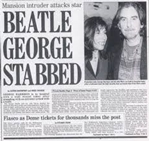
It was a moment of horrible deja vu for music fans around the world — a mentally unwell man had attacked one of the Beatles, leaving him for dead.
It's a headline that could have been from December 8, 1980, but it was also sadly true of this day, December 30, 1999, when George Harrison was stabbed in his home.
Unlike his former bandmate John Lennon, Harrison survived the attack by a knife-wielding attacker, though Harrison's friends and family speculated it ultimately hastened his death from lung cancer less than two years later.
But like the fatal attack on Lennon outside the Dakota Building in New York, the stabbing of Harrison was another case of someone with mental health issues slipping through the cracks and not getting the help they needed before doing something horrible to a much-loved musician.
A troubled man struggling
About a month before he broke into Harrison's home and stabbed the former Beatle, Michael Abram was in a psychiatric ward in Merseyside, the English county centred around Liverpool.
The 33-year-old father of two had been grappling with addiction and undiagnosed schizophrenia for the previous decade, according to reporting from the BBC and The Guardian a details

Did John Lennon really steal music from other musicians? That’s been the hot subject of debate among Beatles fans for decades. Many of those accusations aren’t based in reality. However, when it comes to a few songs from back in John Lennon’s heyday, it really does seem like he stole at least part of some famous tunes. I’ll let you form your own opinion on that. Let’s take a look at three songs that John Lennon allegedly stole from other musicians!
“Come Together” by The Beatles
This might just be one of the biggest songs of the 20th century. “Come Together”, released in 1969, is a blues-rock venture that went on to be one of the most-covered songs of all time. And according to lore, it wasn’t entirely John Lennon’s brainchild.
Some believe that “Come Together” boasts a very similar melody and overall song structure to rock and roll icon Chuck Berry’s tune, “You Can’t Catch Me”. In fact, Chuck Berry (or whoever owned the copyright to that song) even sued The Beatles over it. The suit was settled out of court without much fanfare, and Berry would later collaborate with Lennon. Apparently, there were no ha details

An Antiques Roadshow guest was adamant that an item signed by John Lennon and George Harrison is 'not going anywhere' despite its £1,000 to £1,500 value. On Sunday night's episode of the show (December 28) Fiona Bruce presented a showcase of 'unseen treasures' from Trentham Gardens in Staffordshire.
Throughout the show, valuable items included a rare Shamshir sword and a painting by George Leslie Hunter. Plus, Fiona's antiques knowledge was also put to the test with three pieces of pottery with Cubist designs, and ceramics expert John Sandon chatted about his life in antiques.
One man showcased a restaurant bill from his parents dated in 1965, that at first Marc Allum described as 'unremarkable'. It wasn't until the man explained that his parents were joined by some 'interesting people' in the London restaurant - who were none other than John Lennon and George Harrison.
Marc Allum said: "So this looks like a pretty unremarkable restaurant bill from Parks restaurant in Beauchamp Place in London, what's going on with it?"
When explaining the backstory, the man said: "My parents had a very special anniversary dinner, and my father said to the restaurant maître d' details
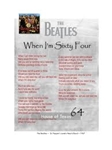
In 2007, Paul McCartney told an interviewer that the Beatles song When I’m Sixty-Four had been on his mind. “Heard it a lot recently – I wonder why?” he said, with a laugh.
Everyone knew the answer: The ex-Beatle had turned 64. And so did I, recently. The song has been on my mind, too. In fact, I can’t stop thinking about it. I sing it in the shower, whistle it as I walk to work, and hum it on my way home. I even played it for my students in class.
They weren’t impressed. The song is about old age, which is something that young people usually don’t think about. And why should they, really? When I’m Sixty-Four reminds us about how much we get wrong when we imagine aging. It’s probably good to put it out of our minds, as best we can.
Mr. McCartney composed the song’s tune on his father’s piano when he was a teenager. His father, Jim McCartney, was a jazz trumpeter who took Paul to big-band shows. The melody has a jaunty cabaret sound. But Mr. McCartney didn’t add words to it until much later, around the time his dad turned 64; it was recorded in 1967 for Sgt. Pepper’s Lonely Hearts Club Band. Mr. McCartney was only details
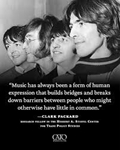
In 2026, the 60th anniversary of The Beatles' first compilation of old hits will be celebrated. A Collection of Beatles Oldies (But Goldies!), released for Christmas in 1966, aimed to satisfy the insatiable appetite of fans frustrated by the gap between the releases of Revolver (August 1966) and Sgt. Pepper's Lonely Hearts Club Band (June 1967). The group still had three good years ahead. Even before their break-up, the respectable sales of this premature best-of hinted at the quartet's ability to perpetuate itself beyond its own demise, which was officially announced by Paul McCartney on April 10, 1970.
Since then, from compilations to remixes, from archive discoveries to documentaries, The Beatles, their music, and their legend have become an inexhaustible source of products designed to fuel nostalgia. Logic would suggest that this seam should be running dry – after all, the band's generation, the baby boomers, is nearing extinction, and nostalgia implies having experienced what one now misses.
But that is without counting the digital age and its ability to blur the boundaries of reality. The constant bombardment of Beatles music and footage – from the release of the 1973 compilations (the "blue" a details

The Beatles, the famous British rock band formed in 1960, have become one of the most revered and successful musical acts in history. Their classic hits such as "Here Comes The Sun", "I Want To Hold Your Hand", and "All You Need Is Love" helped the Fab Four to change the face of popular music forever. As many ardent fans know, some of their most famous songs have interesting backstories. One such song, written by George Harrison, could have been one of The Beatles' biggest hits, but instead it became part of Harrison's solo discovery, and the reason why is quite intriguing.
As ardent music fans will know, Frank Sinatra had a love-hate relationship and opinion when it came to The Beatles. For example, in a press release for his 1965 released album A Man and His Music, Sinatra didn’t hold back when it came to criticizing the British band and their new-age sound, choosing instead to prop up his own music, “If you happen to be tired of kid singers wearing mops of hair thick enough to hide a crate of melons…it should be refreshing.” However, at the same time, he also begrudgingly gave the group their much-deserved props when the moment called for it.
Case in point, Sinatra praised the George details
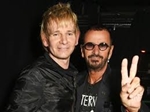
Shunning The Beatles seems like almost an impossible task, especially given how inescapable their music, history, and cultural presence have been since the 1960s. Yet Zak Starkey, the son of Ringo Starr, recently admitted he deliberately avoided listening to the Fab Four until he was well into his twenties.
During an interview with Q1043 New York, the 60-year-old Starkey, who is an exceptionally talented drummer in his own right (having played with the likes of The Who, Oasis, and Johnny Marr, among others), offered up this surprising revelation.
"I'll be honest, when I was a kid, The Beatles were in my way," Starkey said (transcribed by Ultimate Guitar). "I was in groups from a really young age, and I was getting press attention, but they were only paying me attention, and they weren't paying the rest of the band attention." "And I got a bit resentful of this. And that sort of got me into a place where I sort of shunned The Beatles, for a long time. A few people say that's why I have an identity of my own."
But as previously mentioned, finding his own identity on the drum kit proved exceptionally beneficial, leading to a gig with The Who from 1996 through 2025. A band which he was details

We know he’s a fantastic songwriter, dynamic singer of bashers and ballads, and top-of-the-line bassist. But casual fans might not realize that Paul McCartney can play a wide variety of instruments when called upon to do so.
Occasionally, McCartney has even taken the initiative to tackle a song (or even an entire album) all on his own. These four outstanding tracks feature nobody but Macca, who makes for a formidable one-man band. “Maybe I’m Amazed”
McCartney wasn’t really intending to do a solo album, at least not initially, when he headed out to his barn and started making music in his home studio in 1969/1970. He was mostly trying to shake the bad feelings of The Beatles’ breakup, which had occurred but hadn’t yet been announced. The one song that McCartney took into Abbey Road studios was “Maybe I’m Amazed”, perhaps sensing that it needed that professional studio touch. Macca offers several instrumental flourishes on the track, as if it were a band where each member grabs center stage for a moment. Ultimately, the spotlight is on the emotionally potent song and Paul’s stellar, all-in lead vocal performance.
“Every Night&r
details

"The greatest pop record ever made. A record that never dates, because it lives outside time”: How The Beatles created Strawberry Fields Forever – the experimental masterpiece that John Lennon regarded as the best song he ever wrote for the band.
Lennon once described Strawberry Fields Forever as “one of the few true songs I ever wrote”, adding that, along with Help!, “they were the ones I really wrote from experience and not projecting myself into a situation and writing a nice story about it”.
Strawberry Fields Forever is quite simply a masterpiece, a poignant, heartfelt song that bridges the innocence of Lennon’s post-War childhood with the kaleidoscopic, heady sensation of ’60s psychedelia.
It is also a landmark moment in the rich back catalogue of The Beatles. Like everything within the exhaustively chronicled career of The Beatles, there's no shortage of opinions on when exactly John Lennon first came up with the germ of Strawberry Fields Forever.
Forums were abuzz in late 2024, when a clip in the Beatles ’64 documentary showed Lennon in a New York hotel room at the height of Beatlemania playing what certainly sounds like the ope details

During an interview on Stephen Colbert , former Beatle Paul McCartney Nancy Shevell went undercover to a movie theater to watch Yesterday , a film that imagines a world without the band.
“It was really fun. We were in the back row, and someone in the movie says, ‘Paul McCartney, the greatest songwriter in history.’ I had to laugh. It was really cool. We wanted to see the movie with the people, not with the studio executives. I thought it was great,” he said.
He also confessed to constantly dreaming about John Lennon , his friend and former bandmate. "When you have such a close and deep relationship with someone, for so long, sometimes that person can visit you in your dreams. I love when that happens," he confessed.
McCartney also commented a bit on his relationship with the musician, revealing that he felt a strong connection with Lennon who, like him, lost his mother very early. “We both knew that feeling. I never thought it affected my music, until someone told me that 'Yesterday' could be about my mother. 'Why did she have to go? / I don't know / She didn't tell me.' I didn't write it with that intention, but maybe it is.”
At the end of the interview, the s details

The Beatles did not find lasting peace in India, but they found something more enduring: a body of work that captured uncertainty without resolving it.
In February of 1968, at the height of their fame, the Beatles boarded a plane bound for India. They were the most recognisable faces on the planet, their music saturating radios, bedrooms, and public life, yet they arrived in Rishikesh seeking something stubbornly intangible.
Success had delivered them everything it promised and very little that it could sustain. The world expected spectacle; the four young men wanted silence. What they found instead was a brief, strange interlude—part retreat, part unravelling—that would leave behind some of the most enduring music of the twentieth century and quietly mark the beginning of the end.
Their destination was an ashram perched above the Ganges, run by Maharishi Mahesh Yogi, whose teachings on transcendental meditation had begun to circulate through Western “counterculture.” India, to the Beatles, existed both as a real place and as a projection—a landscape onto which exhaustion, hope, and dissatisfaction could be mapped.
The Western press followed eagerly, framing the jour details

Val Barone is a journalist working remotely and specializing in music features. A passionate music lover, she keeps up to date on the latest developments in the entertainment world, and in the past five years, she's written for several sites, including ScreenRant, MovieWeb, TheThings, and Far Out Magazine. She covers breaking news in the music world and loves sharing stories about the classic rock musicians she grew up listening to. As a Gen Z writer, she offers a fresh perspective on the events that change music history.
In 1967, The Beatles were at the height of their creativity. They had stopped touring, and their last release from 1966, Revolver, was their most ambitious album. At least, until the album that changed everything. Sgt. Pepper's Lonely Hearts Club Band was revolutionary from the start, considered the first concept album. Just the cover art drove people into a frenzy in the '60s, and each song pulls the listener deeper into the world the Fab Four crafted. The last song, "A Day In The Life," is the perfect culmination for the album of the decade, its psychedelic themes, orchestral arrangements, and pop culture references perfectly capturing the music revolution The Beatles were leading at the time. & details
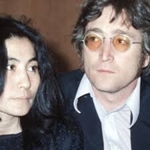
Yoko Ono has been reduced, in the eyes of many Beatles fans, to a punchline. She’s the “reason for the band’s breakup”—a wedge between the once iron-clad John Lennon-Paul McCartney partnership. That’s, of course, obscuring the group’s numerous other issues among themselves. She’s an easy scapegoat for one of the most disappointing band breakups of all time. Anyone who came between a pair of friends from the late ’60s on has been branded a “Yoko”.
Ono’s unpopularity with fans was likely always a source of struggle for the artist, but it only got worse after Lennon’s death in 1980. Ono reportedly faced unthinkable bullying from grieving Beatles fans, who seemingly forgot she felt all they were feeling, albeit with a personal angle.
There was one Lennon song that managed to comfort Ono in the wake of her husband’s death and public backlash, “Grow Old With Me.”
“Grow Old With Me”
We can’t think of a more heartbreaking choice of song for Ono to listen to in the aftermath of Lennon’s murder than “Grow Old With Me.” Grow old along with me / The best is yet to be / When our details
